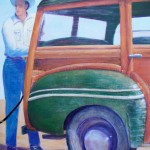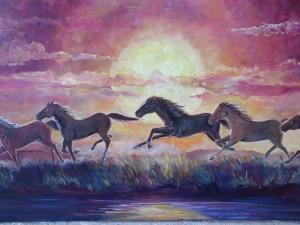
If you are a realist painter working freely, with no drawing, without preparing, and having only a slight idea of what composition you are after has a downside to it. What should you add or remove to make the image believable? What about the style, the design, the technique? Let’s admit it, there is a price to pay for freedom, even though being free with your artwork is more fun and enjoyable.
Taking control of your art is sometimes a lot of work. You have to answer questions about drawing, value, design, composition, and more to determine all the elements of a painting first before you get started.
However, after all the work in preparing is complete, the rest pays off in big dividends. It is easy to devise methods that will allow you to still have control of the painting and keep total freedom. Remember, the better you prepare, the faster the paint goes on the canvas.
- Research your source material.
- Know the facts.
- Make careful drawings on your canvas or paper if it is to be a realistic painting.

In my article: Seven Steps to a Masterpiece, I discussed the planning stages of a realistic painting. (To view the article, click on the picture to the right and it will take you to the post.)
Some artists believe that a tight drawing will make a tight painting. I, personally, do not agree…necessarily. You can work outwardly, free and loose with the paint, not concerning yourself with the details because you have done the hard work. The rest is fun.
